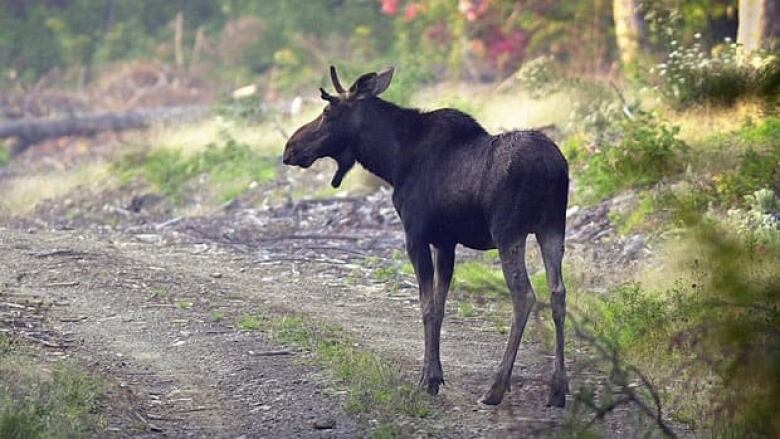Moose population in Manitoba on sharp decline, province called to act
Following a historically high population of 45,000, there are now less than 20,000 moose in the province

Moose in Manitoba are in trouble, and the province's chapter of The Wildlife Society is urging the provincial government to slow down drastic declines in the species' population.
There are less than 20,000 moose in Manitoba in 2015, according to the society less than half of what the population was when it was at its historical high of 45,000.
On Nov. 25, the society sent an open letter to the Manitoba government, asking for a strategy for co-operation, management and resource sharing between indigenous and licensed harvesters, in co-operation with habitat and disease management programming to combat the decline, which the society says especially affects the southern half of the province.
"Anywhere that roads go, basically moose are in serious decline, or have declined to the point where there is no viable population.There's no huntable population for either licensed hunters or aboriginal hunters," saidJack Dubois, co-chair of the Manitoba chapter of the Wildlife Society's conservation affairs committee.
Duboissaid hunting is significantly contributing the the decline, but disease and predators also play a part.
"[And] increased access via logging roadsdevelopment roads. It allows hunters to get at the moose population easier," he said.
Duboissays heconsiders the moose population a symbol of the health of Manitoba's ecosystem, notingthe province has some of the largest areas of the Boreal forest that are left in tact.
"This decline is a sign there are serious things wrong out there and we should be concernedbecause a healthy environment is something that sustains everyone, both economically [and]spiritually, particularly for First Nations people," he said.
"Hunters are concerned. First Nations are concerned. We're very concerned."
Around five years ago, while working for Manitoba Conservation Duboishelped broker a deal with First Nations leaders in Duck Mountain, north of the Winnipeg River, which is one of the most affected areas, to stop hunting moose.
"They have taken the unprecedented step in those areasto ask their own communities to cease hunting moose to allow them to recover which really is virtually unprecedented in Canada that that's happened and it has happened here in Manitoba," he said.
"We'd like to see the government take advantage of that goodwill that's out on the landscapeof all parties, and really renew and increase their efforts."
The Wildlife Society Manitoba chapter letter to Minister Nevakshonoff (PDF KB)
The Wildlife Society Manitoba chapter letter to Minister Nevakshonoff (Text KB)CBC is not responsible for 3rd party content












_(720p).jpg)


 OFFICIAL HD MUSIC VIDEO.jpg)
.jpg)



























































































